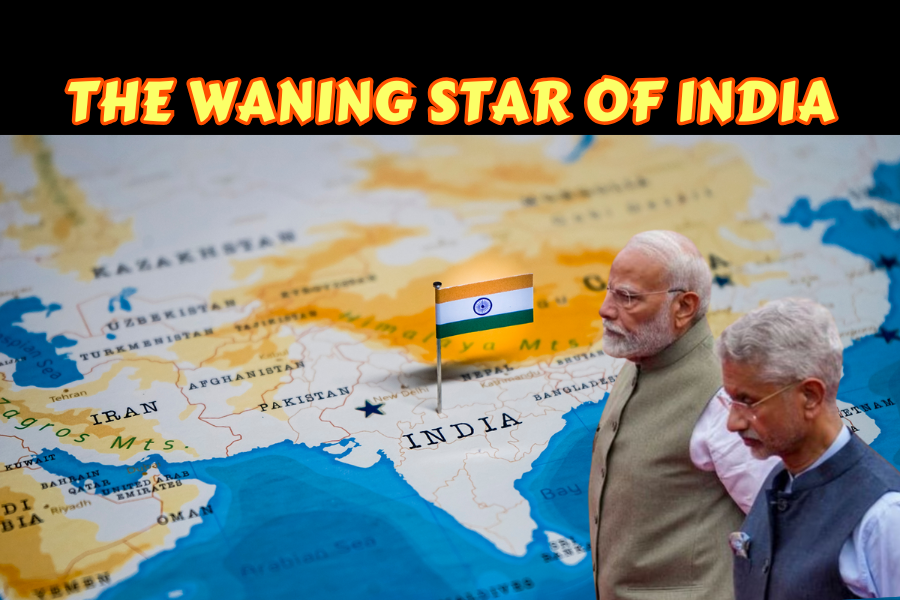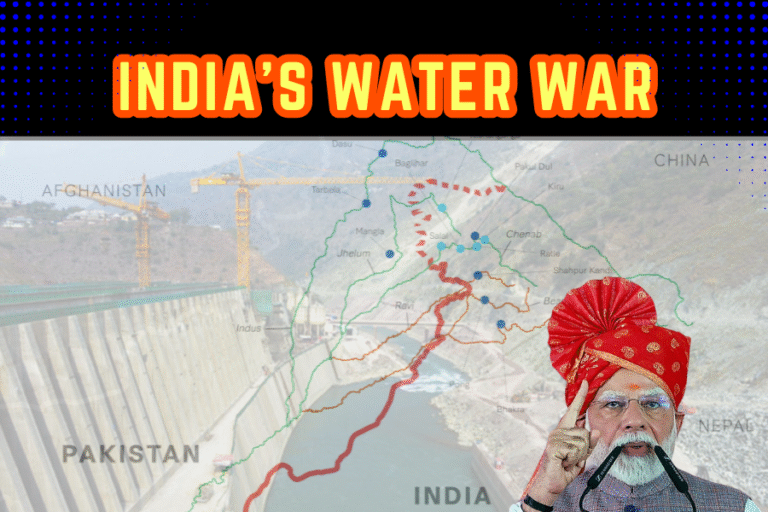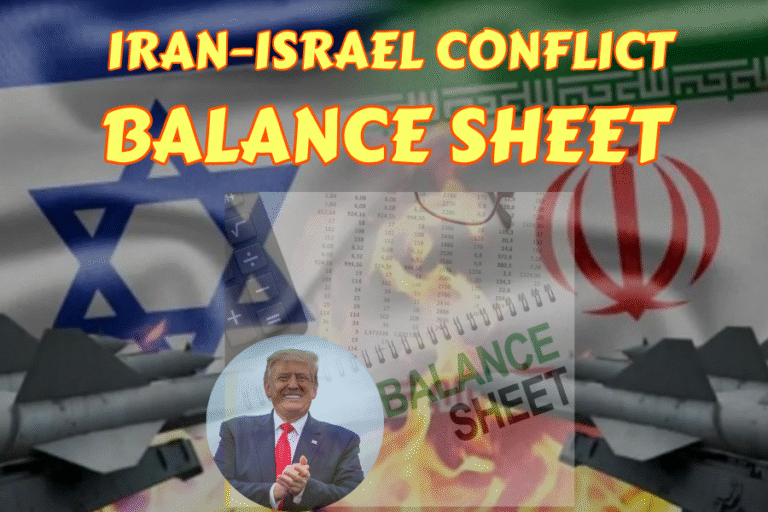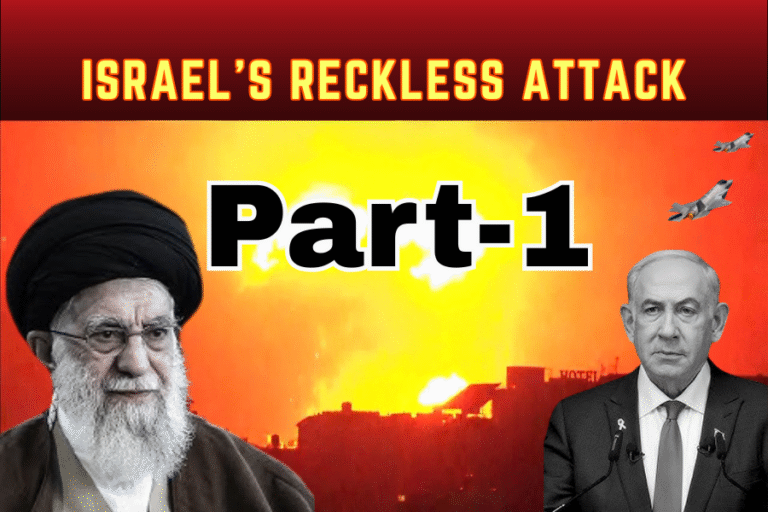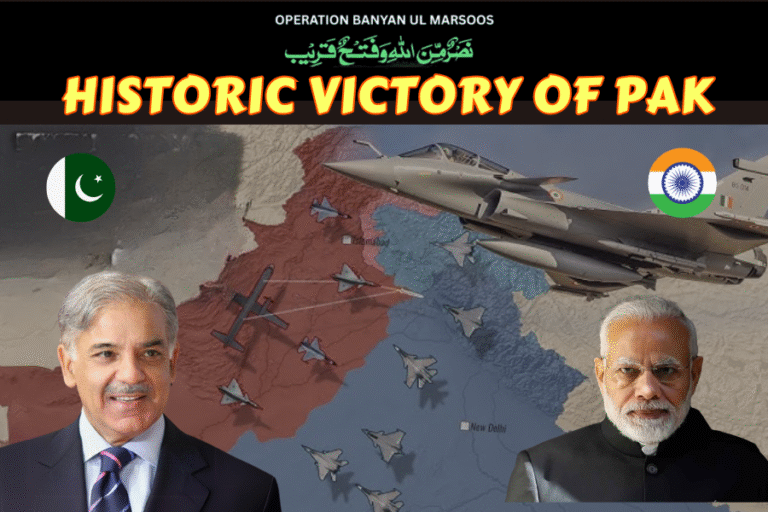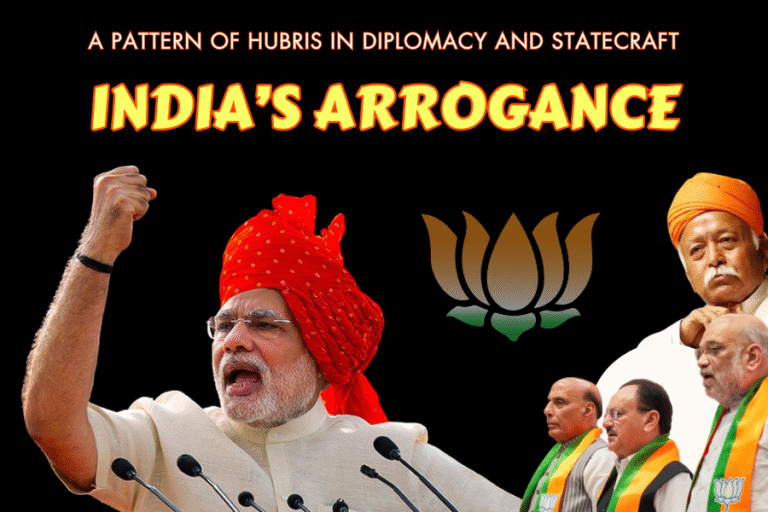(By Khalid Masood)
In the blood-soaked lush green meadows of Pahalgam, Kashmir, on April 29, 2025, a horrific attack claimed 26 innocent lives—tourists seeking solace in India’s alpine paradise, gunned down in a brutal assault that shattered the region’s fragile peace. India, reeling from grief and rage, pointed an accusatory finger at Pakistan, expecting a chorus of global condemnation to rally behind its cause. Yet, the world’s response was a deafening silence, a cold neutrality that exposed the crumbling facade of India’s international stature. Under Prime Minister Narendra Modi’s Bharatiya Janata Party (BJP), India’s quest to cement itself as a global power and moral arbiter has faltered, its voice drowned out by skepticism, indifference, and a shifting geopolitical tide. The Pahalgam crisis, culminating in Operation Sindoor’s perilous brinkmanship, laid bare India’s diplomatic isolation, regional fragility, and the festering wound of Kashmir—a saga of hubris, miscalculation, and a nation grappling with its diminishing persona on the world stage.
A Cry Unheard: The Global Snub
The Pahalgam attack, attributed by India to the Resistance Front (TRF), an alleged offshoot of Lashkar-e-Taiba, was a moment New Delhi anticipated would galvanize international solidarity. Instead, it met a wall of restraint. Neighbors Bangladesh, Nepal, and Sri Lanka—bound by cultural and economic ties—opted for neutrality, refusing to endorse India’s narrative or its retaliatory strikes. Bangladesh, hosting 1.2 million Indian workers, issued a tepid call for “calm,” while Nepal, reliant on India for 60% of its trade, sidestepped condemnation of Pakistan. Sri Lanka, still recovering from its 2022 economic collapse, prioritized stability over taking sides. This regional ambivalence stung India, revealing the limits of its soft power in South Asia.
Globally, the response was equally disheartening. Western powers, led by the United States and European Union, urged de-escalation, their calls for dialogue echoing a pragmatic detachment. President Donald Trump, fresh from his 2025 inauguration, brokered a ceasefire on May 10, 2025, after India’s Operation Sindoor—a series of airstrikes inside Pakistan—threatened nuclear escalation. Unlike the U.S.’s unwavering support for Israel, which saw $17 billion in aid during Gaza conflicts, India received no blank check. The EU, steadfast in backing Ukraine against Russia with €50 billion, offered only platitudes, with High Representative Kaja Kallas urging “peaceful resolution” in a May 5 statement. This contrast underscored India’s struggle to translate its $3.5 trillion economy and QUAD membership into unconditional alliances.
China, India’s northern rival, seized the moment to bolster Pakistan, its “all-weather friend.” Beijing not only advocated for an impartial UN investigation but reportedly offered military support, including $2 billion in arms, HQ-19 AD Systems and J-35A stealth jets. This alignment, rooted in the $62 billion China-Pakistan Economic Corridor (CPEC), highlighted the deepening Sino-Pak axis, a counterweight to India’s aspirations. The crisis thus became a microcosm of global power shifts, with China’s assertiveness exposing India’s diplomatic vulnerabilities.
Operation Sindoor: A Gamble Gone Awry
Domestically, the Pahalgam attack inflamed nationalist fervor, with Modi’s BJP facing pressure to project strength. Operation Sindoor, launched May 7, 2025, saw Indian Rafales and S-400 systems engage Pakistani J-10Cs and drones in fierce air battles, with 314 km-range missile strikes reported. Pakistan, denying TRF’s links to its soil, accused India of fabricating a pretext for aggression, retaliating with hypersonic missiles that destroyed an Indian S-400 unit, per satellite imagery cited by Express Tribune on May 14. The tit-for-tat escalation, costing India $1 billion in munitions and Pakistan $500 million, risked nuclear catastrophe, with both nations’ 170-warhead arsenals on alert.
The United Nations, where India sought to isolate Pakistan, became a stage for its diplomatic defeat. On May 9, 2025, India’s call for sanctions against Pakistan was met with veto threats from China and Russia, while the U.S. and UK pushed for a resolution urging “restraint.” Foreign dignitaries, from Turkey’s Recep Tayyip Erdoğan to Azerbaijan’s Ilham Aliyev, rallied behind Islamabad, with the Organisation of Islamic Cooperation (OIC) condemning India’s “unilateral aggression” on May 10. Even the South Asian Association for Regional Cooperation (SAARC), moribund since 2016, failed to convene, underscoring India’s inability to lead its own backyard.
The Kashmir Conundrum: A Self-Inflicted Wound
At the heart of India’s faltering narrative lies Kashmir, a festering wound that bleeds its global credibility. The abrogation of Article 370 in 2019, stripping Jammu and Kashmir of autonomy, was hailed domestically as a masterstroke but alienated 8 million Kashmiris, fueling militancy. The TRF, formed post-370, claimed 50 attacks by 2025, killing 200, per Indian Home Ministry data. India’s rejection of UN resolutions since 1948, calling for a Kashmiri plebiscite, has perpetuated a cycle of disenfranchisement, with 700,000 troops in the region making it the world’s most militarized zone.
The Pahalgam attack, rather than uniting the world against terrorism, spotlighted Kashmir’s unresolved grievances. Pakistan’s Prime Minister Shehbaz Sharif, addressing the UN on May 12, 2025, framed the crisis as a consequence of “Indian occupation,” a narrative echoed by human rights groups like Amnesty International, which reported 4,000 detentions under the Public Safety Act since 2019. India’s insistence on blaming cross-border terrorism sidesteps local unrest, with 60% of Kashmiris under 30 favoring independence, per a 2023 survey. This internal discontent, coupled with Modi’s nationalist rhetoric, has turned Kashmir into a diplomatic albatross, undermining India’s moral high ground.
A Regional and Global Reckoning
India’s regional isolation is a stark departure from its Nehruvian vision of South Asian leadership. Bangladesh, once a grateful ally for India’s 1971 role in its liberation, now hosts $10 billion in Chinese investments, diluting India’s influence. Nepal’s 2020 border dispute over Kalapani and Sri Lanka’s $7 billion debt to China reflect a region slipping from New Delhi’s orbit. The OIC’s 54-member bloc, representing 1.9 billion Muslims, has consistently backed Pakistan on Kashmir, with Turkey’s 2024 UN speech accusing India of “human rights violations.” SAARC’s irrelevance, with no summit since Pakistan’s 2016 boycott, cements India’s regional impotence.
Globally, India’s strategic partnerships have proven transactional. The U.S., prioritizing India as a $1 trillion QUAD partner against China, offered $20 billion in arms since 2008 but balked at unequivocal support post-Pahalgam, wary of Pakistan’s 40 million crypto users and $2 billion U.S. aid since 2021. Trump’s May 15, 2025, offer to mediate Kashmir—a proposal India rejected—internationalized the issue, reversing New Delhi’s insistence on bilateralism. The EU’s indifference, despite €10 billion in India trade, reflects its focus on Ukraine and energy security, leaving India’s delegations, dispatched to 20 capitals in May 2025, with little to show.
A Crisis of Credibility
The Pahalgam crisis exposed India’s credibility gap, a chasm widened by its own policies. Modi’s zero-tolerance terrorism stance, while resonating domestically, rings hollow abroad when paired with Kashmir’s militarization. The BJP’s Hindutva ideology, alienating India’s 200 million Muslims, has fueled perceptions of communal bias accusing India of “Islamophobic aggression.” India’s $100 billion defence budget and S-400 prowess failed to translate into diplomatic leverage, as allies prioritized stability over ideology.
President Trump’s suggestion of trade incentives for peace—$5 billion in U.S.-India deals tied to de-escalation—underscored the transactional nature of global support. India’s refusal to engage UN mediation, citing sovereignty, contrasted with its 2024 UN Security Council bid, exposing a double standard. The crisis, costing India $10 billion in economic disruptions and 50,000 displaced in Kashmir and border areas, revealed a nation at odds with its global ambitions.

